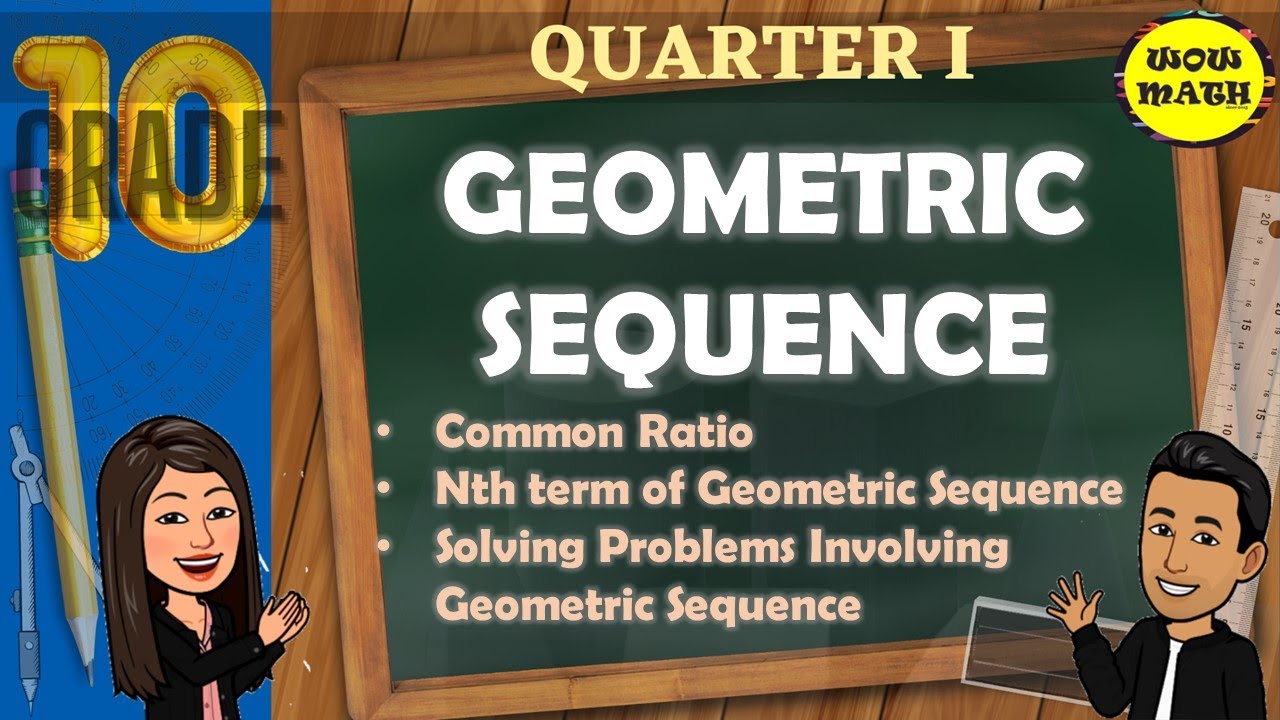Pola Bilangan | Cara Menentukan Rumus Suku ke-n pada Pola Bilangan Tingkat Dua
Summary
TLDRIn this video, the speaker demonstrates how to determine the nth term (Un) of a number sequence, specifically focusing on the rectangular number pattern (pola bilangan persegi panjang). The tutorial outlines a step-by-step process, starting from listing the initial terms and differences, then applying a mathematical approach using factorials and powers of n to derive the formula. The process includes two key approximations to find the formula, eventually concluding with a simplified expression for Un. The method is applicable to various number patterns, including triangular and square patterns.
Takeaways
- 😀 The script introduces how to determine the nth term (U_n) for second-degree number sequences like rectangular numbers.
- 😀 The first step is to write the initial terms of the sequence, which in this case are: 2, 6, 12, and 20.
- 😀 The first-level differences (Level 1) between consecutive terms are calculated, revealing the pattern: 4, 6, 8.
- 😀 The second-level differences (Level 2) show a constant difference of 2, indicating a quadratic pattern.
- 😀 The formula for the first approach is introduced, which uses the second-degree difference and the degree of the sequence: n².
- 😀 After applying the first approach (n²), the difference between the sequence and the approach is calculated, resulting in: 1, 2, 3, 4.
- 😀 The first-level differences of the new sequence (1, 2, 3, 4) are all 1, indicating a linear sequence.
- 😀 The second approach uses the formula for the first-degree difference and gives us n as the linear pattern.
- 😀 Subtracting the second approach (n) from the result of the first subtraction results in zeros: 0, 0, 0, 0.
- 😀 The final formula for the nth term of the rectangular number sequence is U_n = n(n + 1), which combines the quadratic and linear components.
Q & A
What is the main focus of the video?
-The main focus of the video is to explain how to determine the nth term formula (UN) for second-degree number patterns, specifically for rectangular number sequences.
What are the first terms of the rectangular number sequence in the example?
-The first terms of the rectangular number sequence are 2, 6, 12, and 20.
How do you calculate the first-level differences in the sequence?
-The first-level differences are calculated by subtracting consecutive terms. For example, 6 - 2 = 4, 12 - 6 = 6, and 20 - 12 = 8.
What do the second-level differences indicate?
-The second-level differences indicate that the pattern is quadratic (second-degree). In this case, the second-level differences are constant (+2), confirming it is a second-degree pattern.
How is the first approximation formula derived?
-The first approximation formula is derived using the formula B / m! × n^m, where B is the common difference and m is the degree of the pattern. Here, B = 2 and m = 2, so the formula becomes n².
What is the second approximation formula?
-The second approximation formula is derived using the same formula but with B = 1 and m = 1. This results in the formula n.
How is the final nth term formula (UN) determined?
-The final nth term formula is determined by combining the first and second approximations. The first approximation is n², and the second approximation is n, so the final formula is UN = n² + n or UN = n(n + 1).
What does it mean when the differences between terms are constant at the second level?
-When the differences between terms are constant at the second level, it indicates that the sequence follows a quadratic or second-degree pattern.
What would happen if the second-level differences were not constant?
-If the second-level differences were not constant, it would indicate that the sequence is not quadratic, and a different approach would be needed to find the nth term formula.
Can the same method be applied to other types of number sequences?
-Yes, the same method can be applied to other types of number sequences, such as triangular or square numbers, by following the same steps of identifying differences and using approximations.
Outlines

This section is available to paid users only. Please upgrade to access this part.
Upgrade NowMindmap

This section is available to paid users only. Please upgrade to access this part.
Upgrade NowKeywords

This section is available to paid users only. Please upgrade to access this part.
Upgrade NowHighlights

This section is available to paid users only. Please upgrade to access this part.
Upgrade NowTranscripts

This section is available to paid users only. Please upgrade to access this part.
Upgrade Now5.0 / 5 (0 votes)





